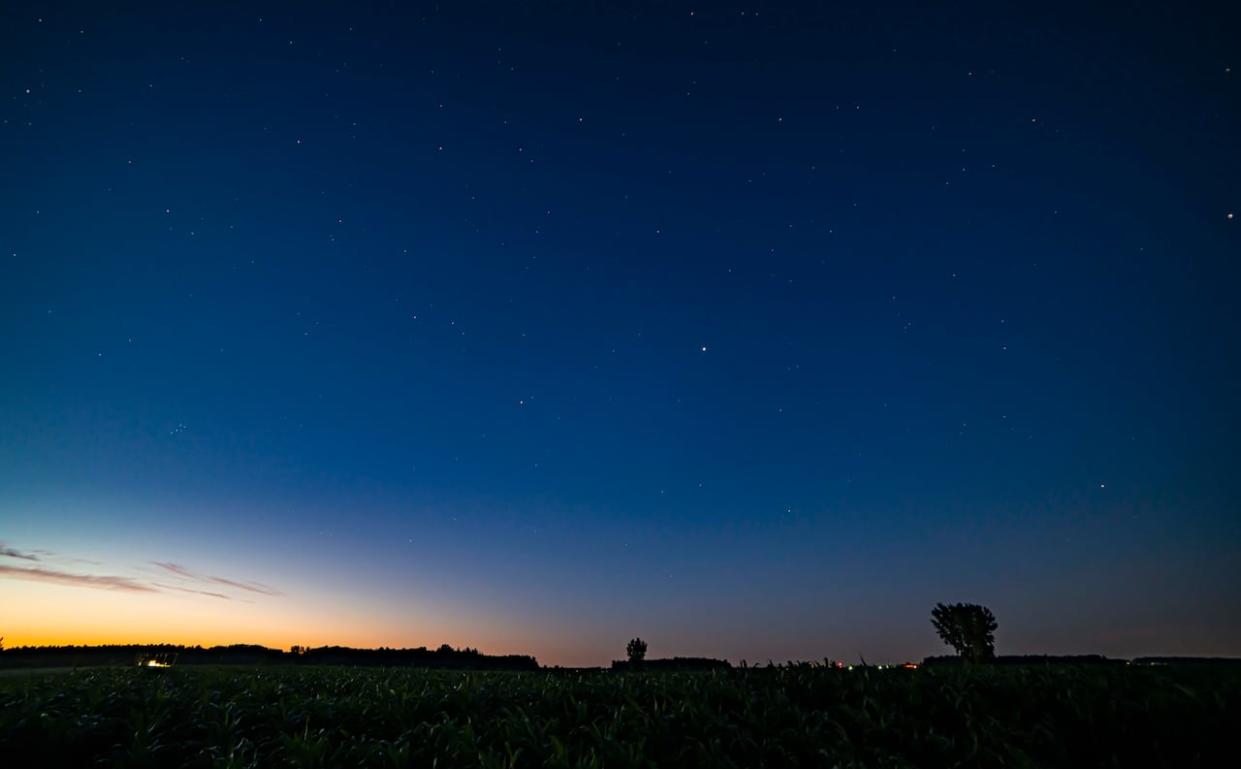Planetary parade to light up morning sky in coming days

Waterloo region skywatchers are in for a celestial treat this week.
Six of the solar system's planets will be lined up in the early-morning hours, with most of them visible without a telescope.
"It's basically just by chance," said Roan Hagger, postdoctoral fellow and outreach coordinator with the Waterloo Centre for Astrophysics.
"All of the planets orbit around our sun," he said. "They move around the sun in these big circles, and it means sometimes they're on one side of the sun, sometimes on the other side of the sun."
"It just happens at the moment that six of them are all round the same side of the sun, and so from here on Earth, it looks like they're in the same patch of the night sky."
Hagger said all planets except Venus will be visible, but a telescope or pair of binoculars will be needed to see Uranus and Neptune.
"The other four, as long as you're under the right conditions, then you should be able to see them with the naked eye," he said.
Hagger said events like this help people "realize our place in the universe."
"It's one of the times when the things that we learn about in quite an abstract way, you can actually see in real life, right?" he said. "We all learn about the planets when we're in school. We see these posters of them all lined up, but it's a very different thing to actually go outside and see them in the night sky with your own eyes and look at them lined up across the sky."
The parade, Hagger said, will be visible shortly before sunrise over the next few days in the east, or southeast, portion of the sky.
The planets will also be very low, near the horizon, so a viewing spot that offers a clear view of the eastern horizon will be key.
However, it will be difficult to see in places with lots of light pollution, so Hagger advises people to get away from towns and cities for the best view.
In any case, NASA has advised people to temper expectations when attempting to view the parade of planets.
"Some online sources have shared excitement about a 'parade of planets' visible in the morning sky in early June (June 3 in particular)," the agency wrote. "In reality, only two of the six planets supposedly on display (Saturn and Mars) will actually be visible."
"In early June, Jupiter and Mercury will be at or below the horizon in morning twilight and not visible; Uranus and Neptune are far too faint to see without a telescope, especially as the morning sky brightens. The closest thing to a planet parade will be June 29, when Saturn, the Moon, Mars, and Jupiter will line up across the morning sky."
In any case, there's some good news for those who miss this month's event.
"This is kind of a bit of a warm-up, my opinion, to next year in February when we're going to be able to see all seven planets in the night sky at the same time," Hagger said. "That's a much-rarer thing."


